The 1980s represented the wild west of frozen dessert innovation—a daring decade when ice cream manufacturers threw caution to the wind in pursuit of novel flavors that would capture America’s imagination and disposable income. Long before artisanal ice cream shops offered lavender-honey or cardamom-rose combinations, major brands and local parlors alike experimented with truly bizarre concoctions that pushed the boundaries of what could reasonably be called “dessert.” These forgotten frozen oddities reflect the decade’s anything-goes attitude, combining unexpected ingredients, popular branded products, and occasionally questionable food science into treats that ranged from surprisingly delicious to utterly baffling.
1. Squeezable Toothpaste-Tube Ice Cream
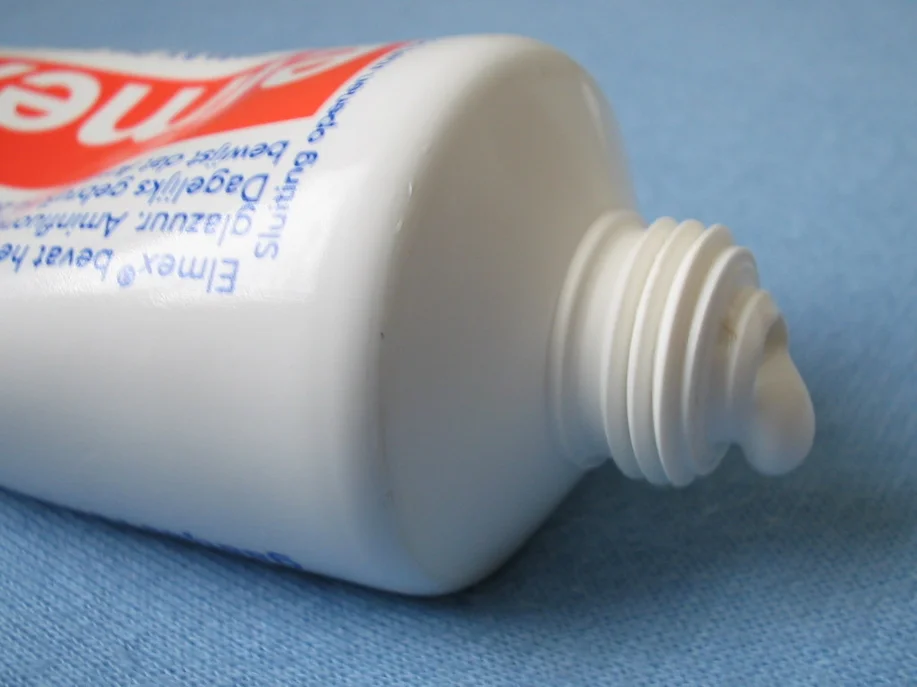
In 1986, Coca-Cola’s food division briefly launched “Squeeze-a-Freeze,” a semi-frozen dessert packaged in toothpaste-like tubes that promised “ice cream fun without the mess.” Available in relatively tame flavors like chocolate and bubble gum, the product’s innovation wasn’t the taste but rather the delivery system—children could squeeze ribbons of the semi-solid substance directly into their mouths or onto standard ice cream as a topping. The unusual consistency, somewhere between soft-serve and frosting, resulted from a complex emulsifier system that prevented typical ice crystal formation while maintaining freezer stability. Whitakers Chocolates explores the creation of its popular cousin, mint chocolate, and proof of just how much we can’t resist mint to this day.
Parents initially appreciated the no-drip design that eliminated sticky fingers, though enthusiasm waned when children inevitably discovered the joy of creating elaborate dessert “sculptures” on kitchen tables. After struggling with production consistency issues and parental complaints about the product’s messy potential, Coca-Cola quietly discontinued the line in 1988, making it one of the decade’s shorter-lived frozen novelty experiments. Packaging examples occasionally appear on vintage food memorabilia auction sites, commanding surprising prices from collectors nostalgic for this toothpaste-inspired treat.
2. Hubba Bubba Bubble Gum Ice Cream with Real Gum Pieces
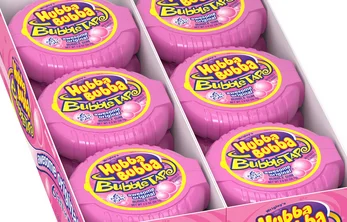
Wrigley’s pushed the boundaries of dessert functionality with their limited-edition Hubba Bubba ice cream featuring actual pieces of bubble gum suspended throughout the pink confection. The product’s tagline—”The treat that keeps on treating!”—highlighted its unique dual-phase eating experience: first enjoy the sweet, artificially-flavored ice cream, then collect the still-chewable gum pieces for an additional round of enjoyment. The bubblegum chunks were specially formulated to remain pliable even when frozen, creating a strangely resilient texture contrast to the surrounding creamy base. Snack History explores the history of this brand, including all its ambitious ventures that made it such a classic.
Consumer safety advocates expressed concerns about the choking hazard presented by children potentially swallowing the gum pieces accidentally while consuming the ice cream. Parents reported mixed feelings about the product’s fundamental premise—many questioned the wisdom of teaching children to chew items found in their food, while others complained about finding discarded gum wads pressed under furniture after dessert time. After appearing in select markets between 1983-1985, this curious experiment in extended dessert experiences melted away from store freezers, though its concept lives on in “bubble gum” flavored ice creams (minus the actual gum) still available today.
3. Jell-O Pudding Pops’ Failed “Vegetable Garden” Line

Riding the enormous success of their standard chocolate, vanilla, and swirl Pudding Pops, General Foods boldly ventured into uncharted territory with their short-lived “Vegetable Garden” variety pack in 1984. This unusual assortment featured carrot, cucumber, and “garden greens” flavored frozen pudding pops that promised parents “a fun way to get vegetables into finicky eaters.” The carrot variety achieved moderate success with its sweet, almost carrot-cake-like profile, while the cucumber option delivered a surprisingly refreshing experience similar to modern spa water. Mid-Century Menu takes a big scoopful out of the history of Pudding Pop flavors.
The “garden greens” variant proved most problematic, with its vibrant green color and ambitious attempt to make spinach and kale appealing in frozen dessert form. Despite celebrity spokesman Bill Cosby’s enthusiastic promotion, children rejected the vegetable varieties with such conviction that General Foods pulled the line after less than six months. Internal company documents later revealed that the vegetable flavors had actually contained minimal vegetable content, instead relying heavily on artificial flavoring and coloring—making their rejection by children even more disheartening for product developers who had already significantly compromised the nutritional concept.
4. Pillsbury Space Food Sticks Ice Cream
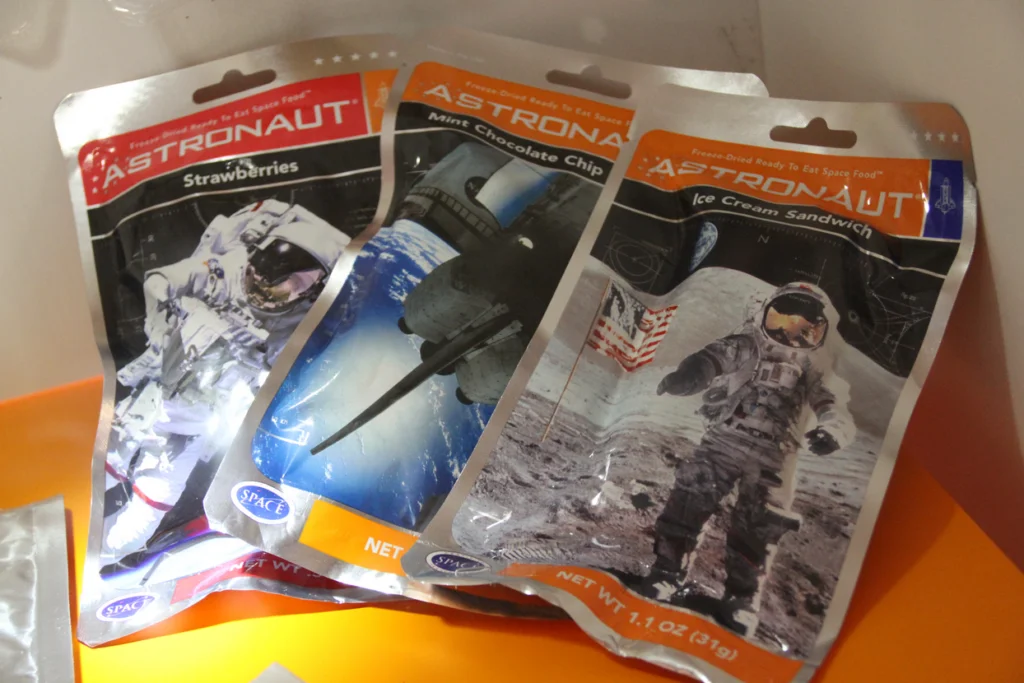
Capitalizing on continued public fascination with NASA’s space program and the nostalgic appeal of Space Food Sticks (the cylindrical protein snacks originally developed for astronauts), Pillsbury partnered with a regional dairy company to release Space Food Sticks Ice Cream in 1982. This unusual frozen product featured vanilla ice cream swirled with crumbled chocolate or peanut butter Space Food Sticks, creating a texture similar to cookies and cream but with the distinctive malty, vitamin-enriched flavor profile of the space-age snack. The packaging prominently featured NASA imagery and promises of “astronaut-approved nutrition” despite having no official connection to the space program.
The product faced two significant challenges: the crumbled Space Food Sticks absorbed moisture from the ice cream, creating oddly chewy, almost gummy inclusions, and the vitamin fortification in the original sticks lent a medicinal aftertaste that became more pronounced when frozen. Despite these issues, space-enthusiast children lobbied parents for this novelty item, available primarily in the Midwest and parts of the Southeast before disappearing in 1984. The concept represented an early attempt at “functional” ice cream decades before protein-enhanced and vitamin-fortified frozen desserts would become commonplace.
5. Hostess Twinkie Ice Cream with Intact Twinkies
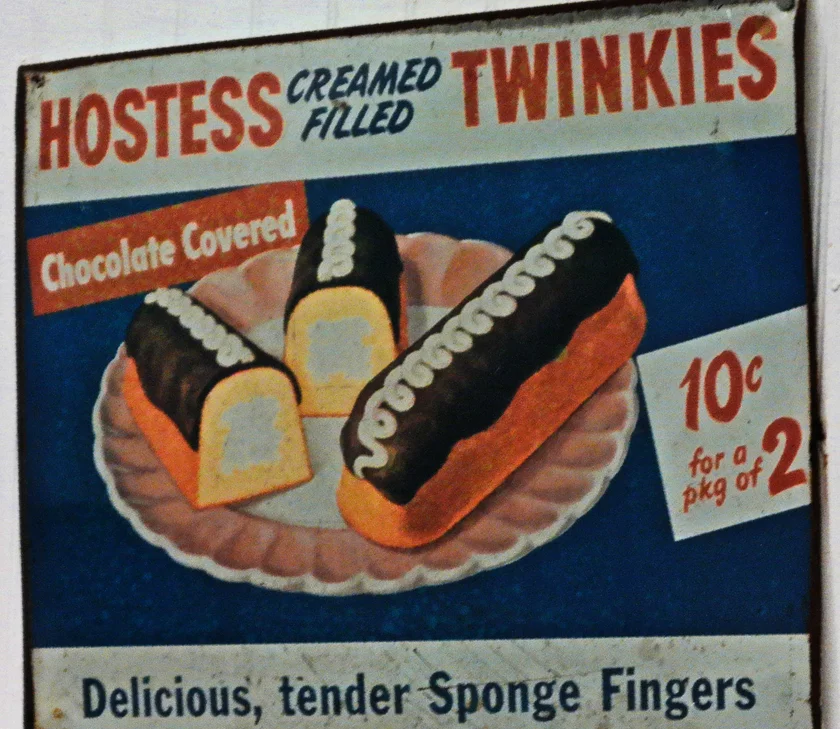
Continental Baking Company’s brief experiment with Twinkie Ice Cream in 1983 represented perhaps the decade’s most structurally ambitious frozen dessert. Rather than merely incorporating crumbled Twinkies into vanilla ice cream, this short-lived product featured actual full-sized Twinkies suspended vertically within half-gallon containers of yellow cake-flavored ice cream. The innovative packaging included clear plastic windows along the container sides, allowing shoppers to see the Twinkies standing at attention within their frozen imprisonment.
The engineering challenges proved formidable as the Twinkies needed special preservation treatment to prevent them from freezing solid while maintaining their distinctive texture. Most consumers reported that the Twinkies did indeed remain somewhat spongy, though eating around these inserted cake cylinders proved awkward with standard ice cream scoops. The product’s premium price point—nearly twice that of regular ice cream—limited its appeal despite the novelty factor, and production challenges led to its discontinuation after appearing in test markets across California and Texas for just one summer season.
6. Kellogg’s Breakfast Cereal Swirl Collection

In 1985, Kellogg’s partnered with Sealtest Dairy to introduce morning-inspired indulgence with their Breakfast Cereal Swirl ice cream collection featuring familiar cereals suspended in complementary ice cream bases. The flagship variety, Froot Loops Swirl, combined vanilla ice cream with vibrant ribbons of fruit-flavored syrup and actual Froot Loops pieces that remained improbably crunchy through a proprietary coating process. Other varieties included Frosted Flakes Crunch (with caramel swirls) and Cocoa Krispies Chocolate Ripple, each promising to deliver familiar breakfast flavors in frozen form.
Nutritionists voiced strong opposition to the product line, arguing that it further blurred the already indistinct line between breakfast and dessert in children’s minds. While the Frosted Flakes variety developed a small but dedicated following, most consumers found the concept better in theory than execution—the coating that maintained the cereals’ crunch also dulled their flavor, creating an uncanny textural experience without the expected taste payoff. After lackluster sales through 1986, the product line was quietly discontinued, though it anticipated the cereal milk-flavored ice creams that would become trendy in upscale ice cream shops decades later.
7. 7-Up Float Frozen Pops
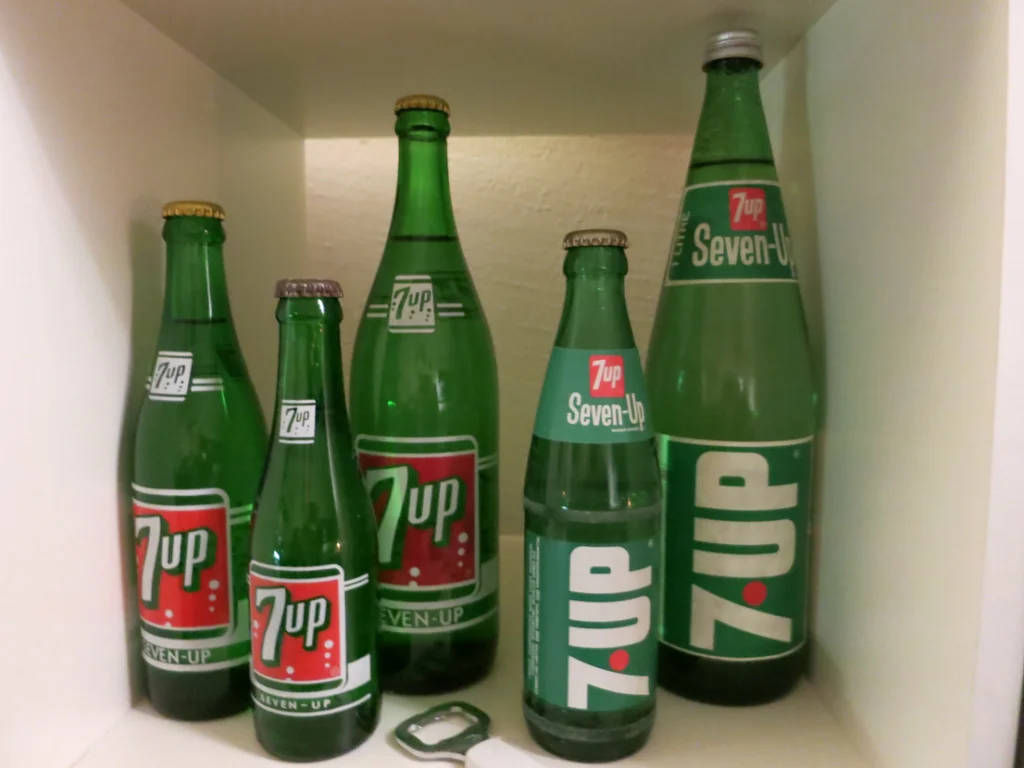
The 7-Up company’s venture into the frozen novelty market produced one of the decade’s most chemically intriguing treats: the 7-Up Float Pop, which promised the flavor experience of a traditional ice cream float in convenient single-serve form. The ingenious dual-chamber popsicle featured lemon-lime sherbet in the lower portion and vanilla ice cream on top, separated by a thin gel layer that prevented premature mixing. When eaten, the flavors combined to reasonably approximate the experience of a traditional soda shop float, complete with a subtle fizzing sensation achieved through encapsulated citric acid that activated when the components melted together.
The technical achievement impressed food scientists more than consumers, who found the delayed fizzing effect disorienting and the overall experience less satisfying than an actual float. Production challenges plagued the product, with inconsistent separation between chambers and occasional premature activation of the fizzing component during temperature fluctuations in transport or storage. After a national rollout in 1987, the product lasted just eighteen months before disappearing from freezer cases, though the technology developed would later influence other dual-texture frozen novelties that found greater success in subsequent decades.
8. Hidden Valley Ranch Ice Cream
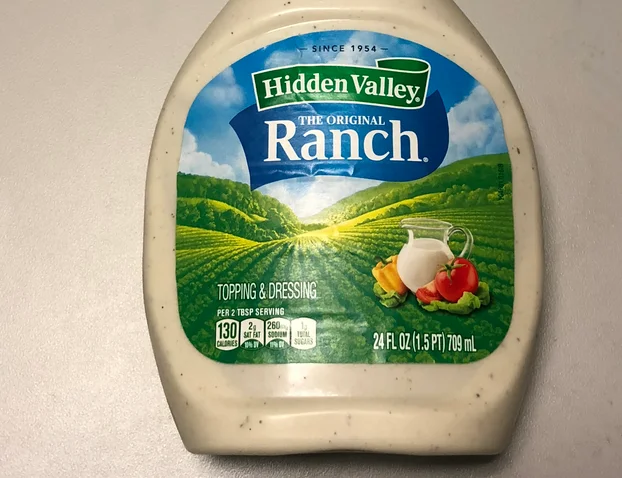
Riding the wave of America’s growing obsession with ranch dressing, Hidden Valley briefly ventured beyond the salad bowl with what might have been the decade’s most conceptually challenging frozen dessert. Their Ranch Ice Cream, tested in select Midwestern markets during summer 1986, featured a buttermilk and sour cream base flavored with the brand’s signature herb and spice blend, creating a tangy, savory-sweet profile marketed as “refreshingly different” and “the perfect complement to spicy foods.” The packaging suggested serving scoops alongside buffalo wings or potato skins as a cooling counterpoint rather than as a traditional dessert.
Consumer response proved polarized, with adventurous eaters appreciating the sophisticated flavor profile while traditionalists rejected the concept entirely. Focus groups revealed fundamental confusion about appropriate consumption contexts—was this an appetizer, side dish, or dessert? The product’s strongest advocates were actually bartenders who discovered it made interesting frozen cocktails when blended with vodka. After appearing in just three test markets for a single summer, the product was withdrawn, though it has achieved legendary status among food historians as an early predecessor to today’s more accepted savory ice cream flavors like olive oil and goat cheese.
9. Super Sour Warheads Ice Cream
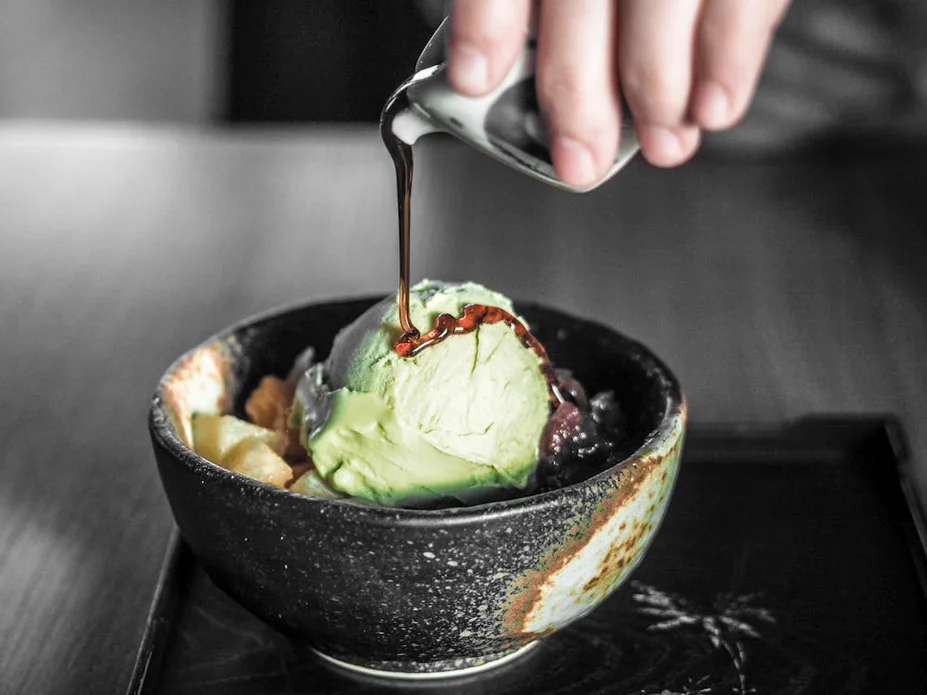
In what dentists described as “an assault on tooth enamel from multiple directions,” the Warheads candy brand licensed its name and flavoring technology to a regional ice cream company in 1988 for what became one of the decade’s most physically challenging frozen desserts. Warheads Super Sour Ice Cream featured a sweet cream base loaded with sour powder pockets that activated upon contact with saliva, creating an intense pucker effect followed by a sweet relief phase. Available in blue raspberry and green apple varieties, the ice cream came with warning labels suggesting consumers “prepare for extreme sourness.”
Parents reported children approaching the product as a dare rather than a treat, with elementary school playgrounds hosting “who can eat the most without making a face” contests. Dentists expressed concern about the combination of sugar, dairy acids, and extreme sour compounds creating perfect conditions for enamel erosion. Despite—or perhaps because of—its face-contorting properties, the product developed a cult following in the Northeast before manufacturing challenges and parental opposition led to its discontinuation in early 1990, just before the Warheads candy brand achieved national distribution and mainstream success.
10. Pepsi-Cola Layered Popsicles

The cola wars extended into the frozen novelty aisle in 1984 when Pepsi launched their innovative layered popsicles featuring three distinct strata: cola-flavored ice, a thin cream middle layer, and a mysterious “fizz crystal” top section that created carbonation-like popping sensations in the mouth. The product’s marketing heavily emphasized this textural experience, with commercials showing children wide-eyed with surprise as the crystals activated. The technology behind these sensation crystals—similar to Pop Rocks candy but formulated to activate at lower temperatures—represented a significant R&D investment for what was essentially a novelty frozen product.
While initially popular, production inconsistencies led to quality control issues, with some batches featuring partially dissolved fizz crystals or bleeding between layers that compromised both the visual appeal and the staged sensory experience. Coca-Cola’s legal department also filed objections to the product’s marketing language, which they claimed made direct comparisons to their brand. After appearing nationally for two summers, the product was reformulated without the problematic fizz layer and eventually discontinued entirely as Pepsi refocused its frozen product strategy toward slush drinks through convenience store partnerships.
11. Licorice Twist Soft Serve
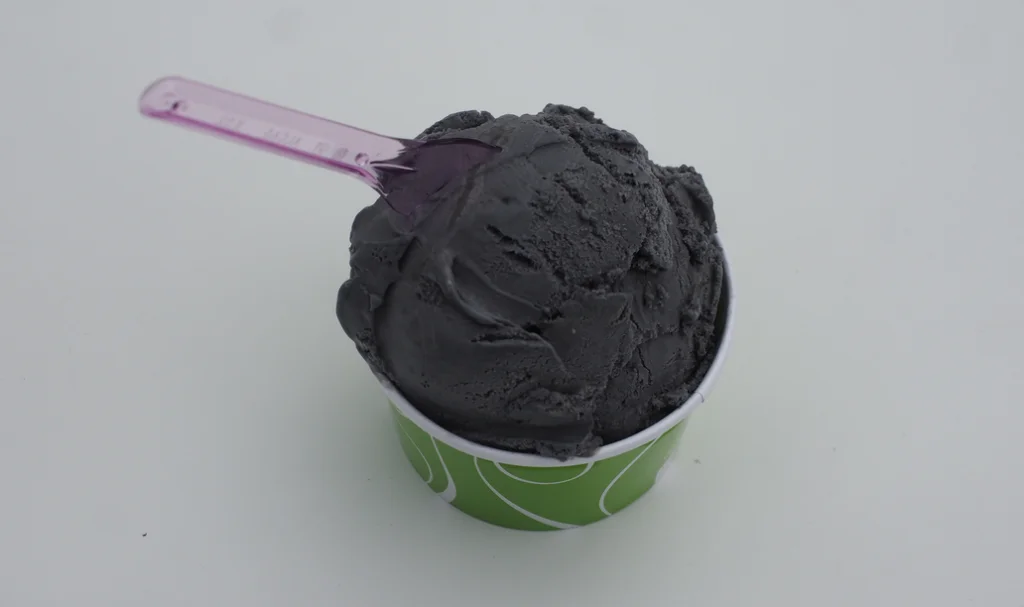
One regional dairy company’s attempt to capitalize on America’s polarized relationship with licorice produced what industry insiders still reference as “the flavor that emptied parlors.” Midwest-based Thorson’s Dairy rolled out Licorice Twist soft serve in their ice cream shops during summer 1985, featuring intense black licorice flavor in a charcoal-gray soft serve base, offered alongside their standard vanilla in their signature twist cone. The dramatic black-and-white spiral created a visually striking treat that proved far more popular in photographs than in actual consumption.
Store managers reported that most customers ordered the photogenic twist cone but ate only the vanilla half, discarding the licorice portion after the obligatory photo opportunity. Sales data revealed that plain vanilla outsold the twist option by eight-to-one, with standalone licorice cones selling in negligible numbers despite aggressive promotional pricing. After just one season, the flavor was pulled from regular rotation but lived on as a Halloween special at select Thorson’s locations into the early 1990s, where its dramatic appearance fit seasonal themes. The experiment stands as evidence that Americans’ appreciation for licorice has clear boundaries that don’t extend to dairy-based interpretations.
12. Diet Frozen Dessert with Olestra
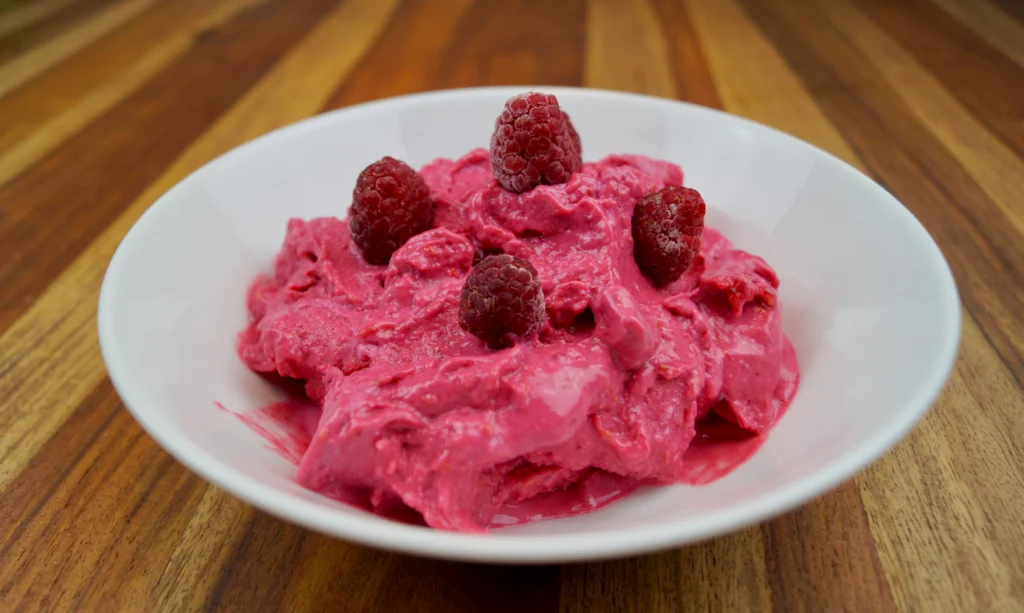
The late 1980s obsession with fat-free foods reached its questionable pinnacle with the brief 1989 test marketing of “Free & Clear,” a fat-free, sugar-free ice cream alternative made possible by the then-experimental fat substitute olestra. This Procter & Gamble-developed compound could withstand freezing temperatures while providing the mouthfeel of fat without the calories, seemingly solving the textural challenges that plagued earlier diet frozen desserts. Available in vanilla, chocolate, and strawberry varieties, the product promised “all pleasure, no guilt” and was initially embraced by calorie-conscious consumers impressed by its relatively authentic texture and taste compared to other diet options of the era.
The product’s hasty withdrawal from test markets coincided with increasing reports of olestra’s now-infamous digestive side effects, which proved particularly pronounced in the larger quantities consumed in frozen dessert form compared to the potato chips that would later carry warning labels. This unique frozen dessert had the distinction of being one of the only food products in American history to generate incident reports with phrases like “unexpected results at inconvenient times.” While the product never expanded beyond initial test markets in California and Florida, its brief existence represents the zenith of diet culture’s influence on the frozen dessert category before the pendulum would swing back toward premium, full-fat indulgences in the 1990s.
While today’s artisanal ice cream shops pride themselves on avant-garde flavor combinations, they rarely approach the bizarre chemical and textural experiments that characterized the 1980s frozen dessert landscape. That decade’s unique combination of food science advancement, marketing bravado, and limited regulatory oversight created perfect conditions for these strange frozen concoctions to briefly appear on store shelves before melting back into obscurity. Perhaps we should be grateful that the most unusual flavors have been lost to history, remembered only in fuzzy photographs and the occasionally traumatized taste memories of those who experienced ice cream’s strangest decade firsthand.


